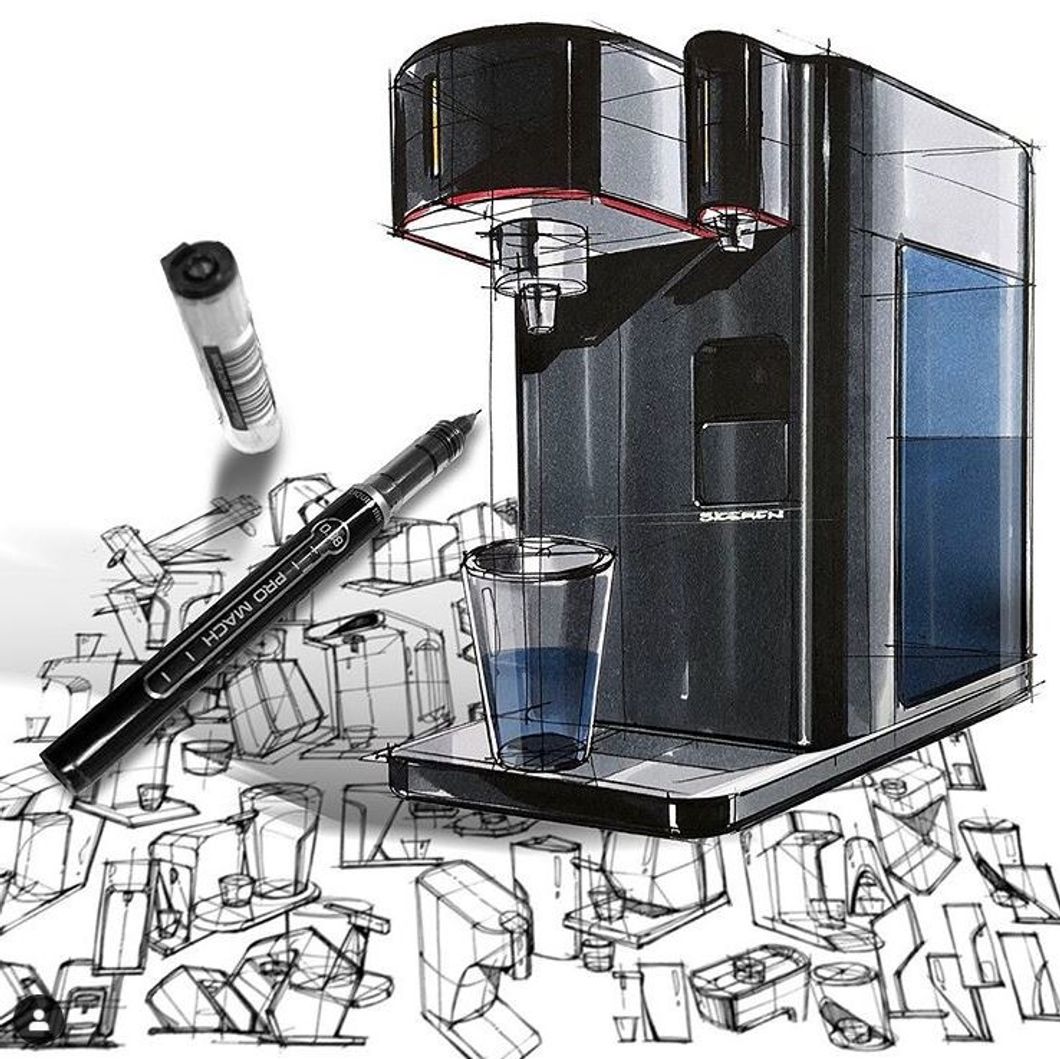I honestly wish someone made me a list of the things I would need for my first year here as an industrial design student. I had to wait for a whole week for most of my supplies to come through the mail and even then, I still needed stuff after the first week of classes. In hopes of saving the lives of many fellow design students, I took the liberty to gather all the materials I used during my first year and put them into this list. Enjoy!
Photography Skills
The number of times I had to run around campus to find a camera for my prototypes and sketches is astronomical. However, even after renting one out, there was still the struggle of trying to find good lighting and background. Sometimes the resources aren't there and you need to improvise.
Highly suggest using a cardboard box with light white paper to create a DIY light box . It's super easy to make in a studio and break down to bring home.
2. A Laptop That Won't Give Up
This is not a joke. There will be times when you have four different apps open on your laptop for a project and your 3-year-old laptop will sound like it's taking off.
Stay away from MAC and go for PC. Solidworks and your future self will love you for it.
3. Markers
People still draw by hand! It takes a special kind of skill to master sketches and conquering that skill is rewarding. It takes patience and effort and a lot of hand cramps and sleepless nights (maybe).
Grayscale markers are fantastic to use. Even if you choose to use the inexpensive brands, you can still create the same metallic effect. If you're more into colors, go for colorful markers; they're eye-catching as well. No matter the color though, a sketch is insignificant without a variety of line thickness. You can assemble drawings and sketches with one continuous line thickness and it'll still manage to look flat. The detail is in the lines, too!
4. T-Square And Triangles
As a design student, you will almost always be given some sort of large desk in the studio. A T-square is this weird T-shaped panel that'll help you keep your lines and drawings in place. You align the T-square on the edge of your desk and move to create horizontal lines anywhere on your page. It's easier than aligning a series of rulers.
Triangles are used to help you construct angled lines on a page with the help of a T-Square. I have a 30-60-90 triangle and two right triangles in different sizes.
5. Paper
I used so much paper my first year as a design student and guess what? There are different types of paper to use. Drafting paper is wonderful to use when you have a messy sketch and you wish to copy it onto a new sheet of paper. It's slightly see-through and very easy to crease. If you have a solid idea of what you want to draw, drop the drafting paper, and use bristol paper, a thicker and durable paper. It'll hold up better when traveling to class and the thickness looks a bit more professional.
6. Masking Tape
Please use masking tape to hold down the paper you're drawing on to ensure your lines are consistent and the whole composition looks straight.
7. Eraser And Drafting Brush
I don't care what you say; buy a ton of erasers, specifically the white plastic ones. They clean up the pages a lot better than the pink rubber ones. And with erasing comes with eraser shavings, so invest in a drafting brush to avoid smudging with your tired hands.
8. Mechanical Pencils
If you don't have any of these, you will struggle to draft by hand. Wooden pencils are alright but when you're drawing for hours, the wooden frame will feel disgusting between your fingers. My go-to will always be Pentel products because they offer a variety of pencils in different styles and graphites.
I understand that a lot of the things on this list are very old school but sometimes learning it the old way can enhance your skills as an artist and your ability to communicate your designs to consumers. Do as you wish, this list will be here.









































